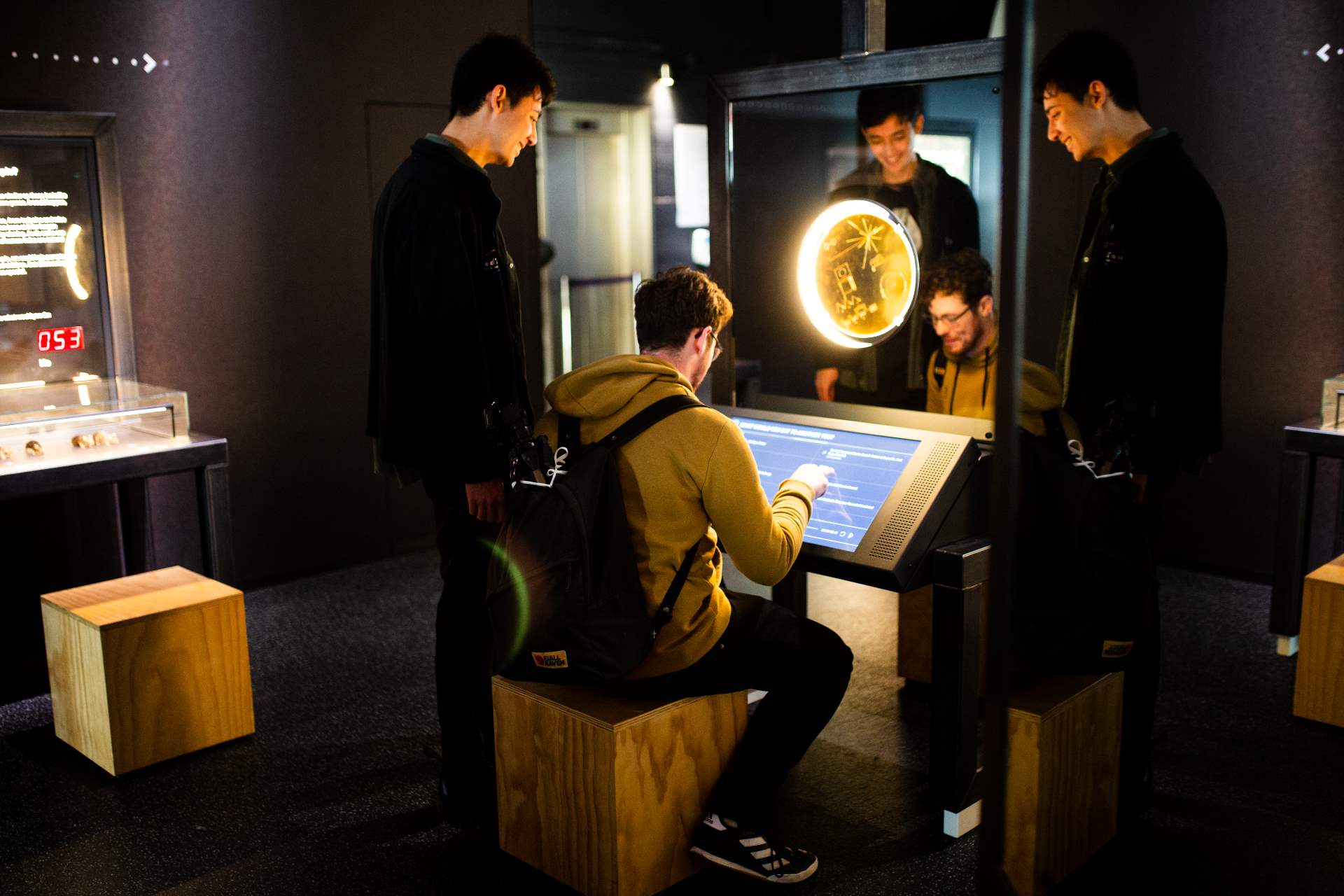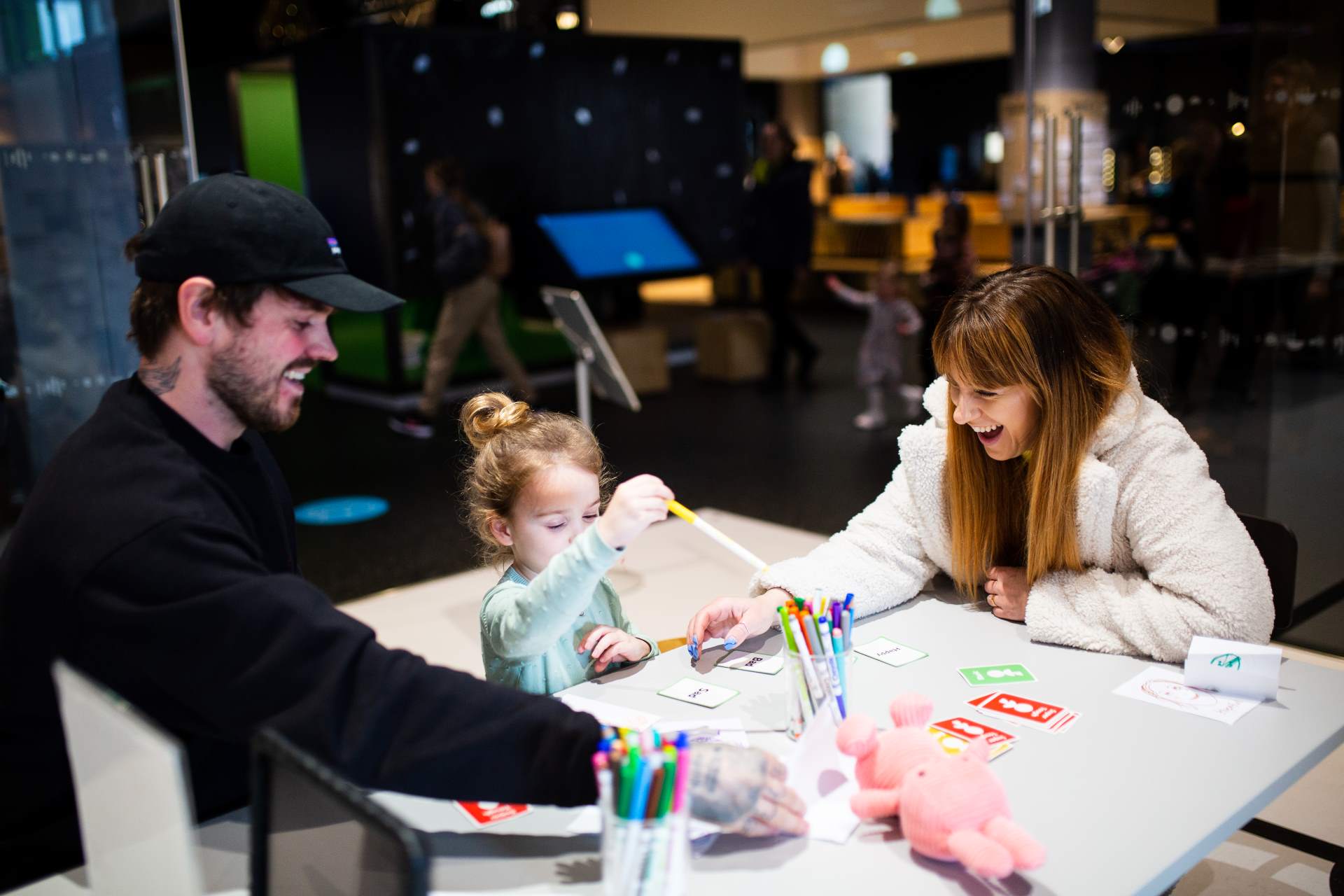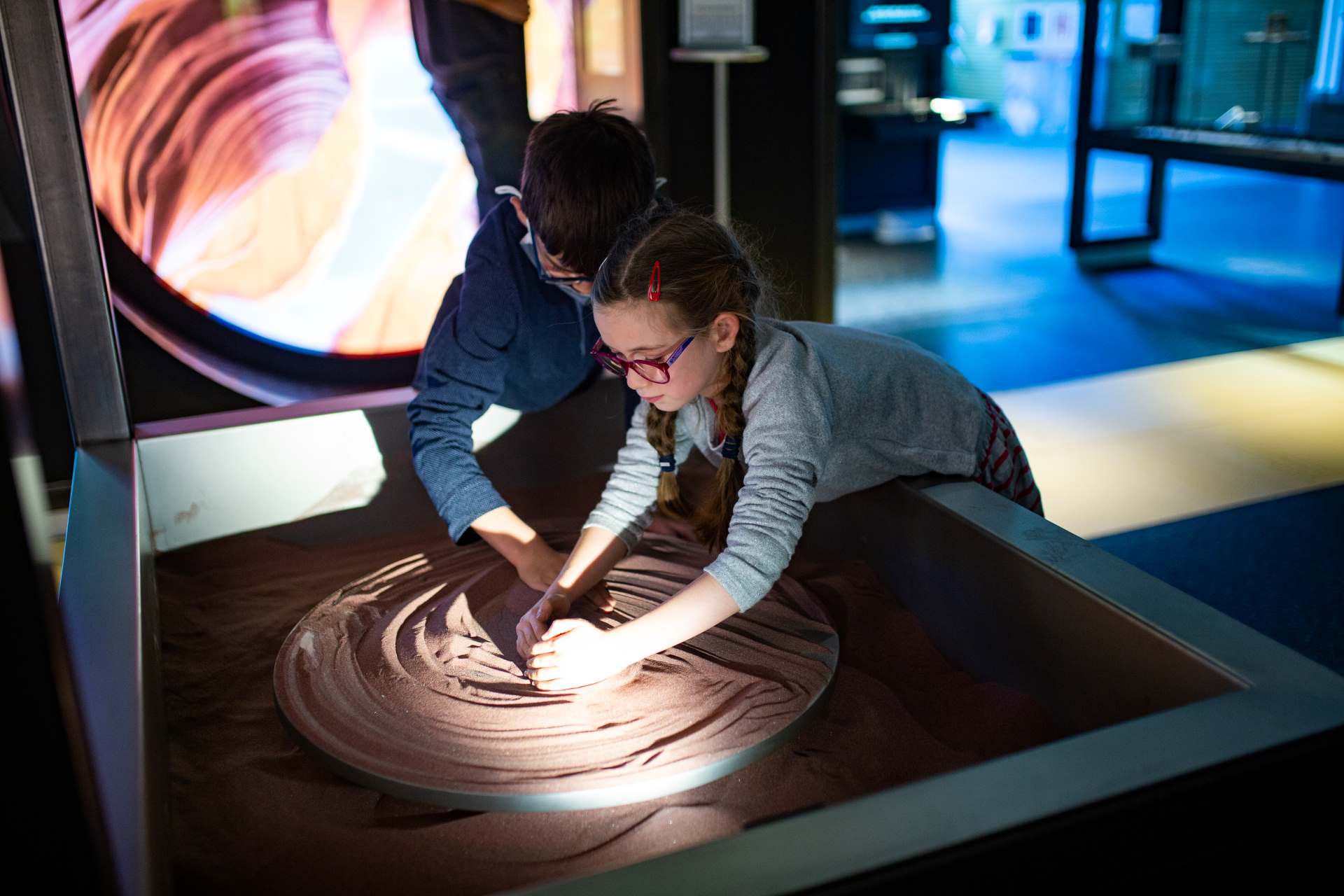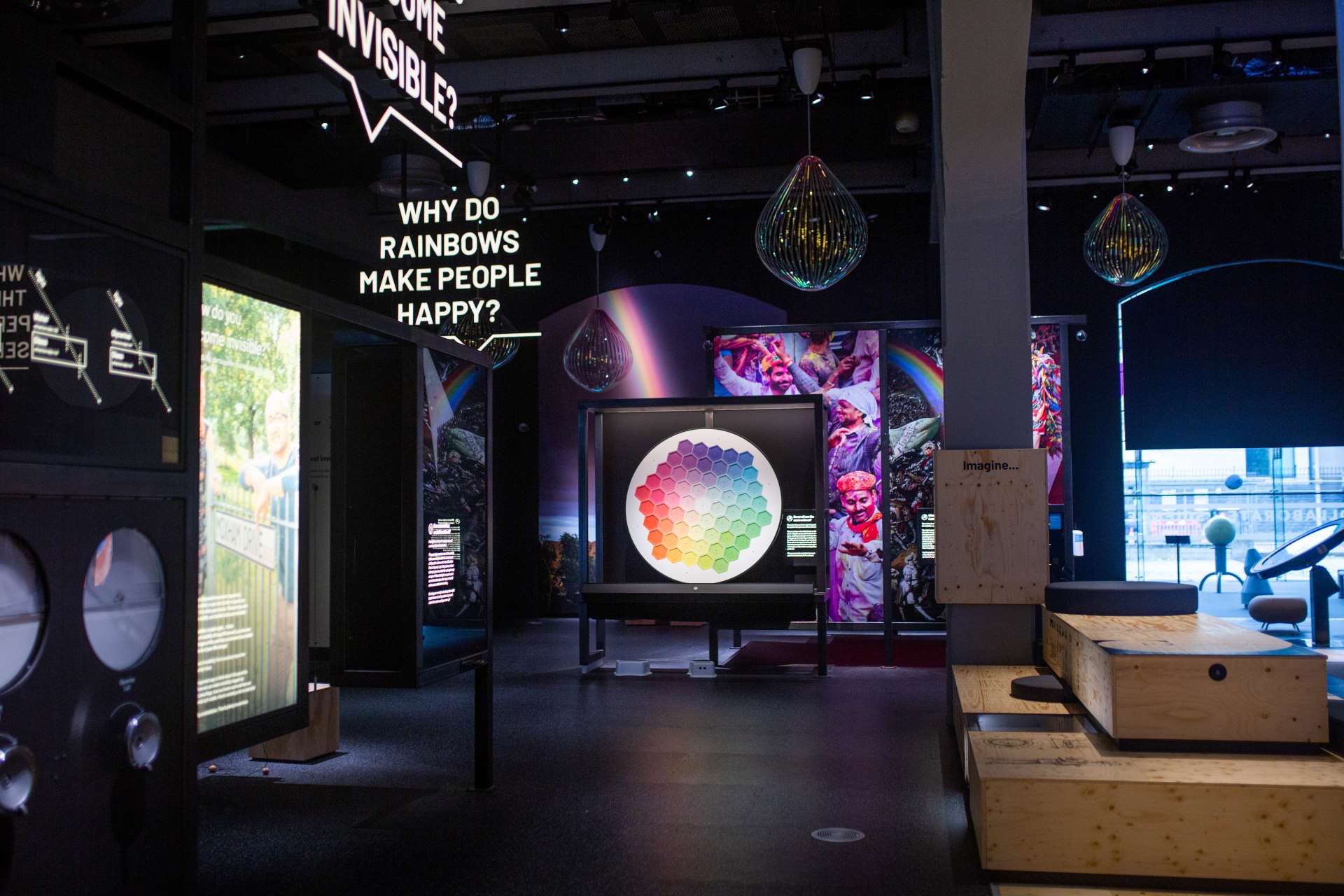Photo credit: Liza Whiting
A museum exhibit starting from a place of curiosity rather than expertise reopens in Bristol

The exhibit, entitled Project What If, started with 15,000 questions submitted by everyday Bristolians. Can your soul be seen by science? Who was the first person to see sand? Is there another me in the Universe? What controls our perception of time, and can we slow it down?
The outcome is 68 interactive exhibits and 25 works of art, clustered around questions on broad themes varying from Rainbows, to Soul, to Invisibility. Visitors of all ages can chat with a robot, broadcast a message into space, learn about health inequalities, and study the science of happiness.
Project What If had just opened in 2022 when the response to a small fire at We the Curious caused significant damage to the galleries. The restored exhibition reopened earlier this month.
Giving the public—especially young people—the chance to engage in the process of scientific inquiry and knowledge creation is baked into the work of We the Curious. Through its Open City Research program, for instance, visitors engage in interactive activities including games to help answer researchers’ scientific questions, like on how young people think about the role robots will have in their own lives in the future.
“It’s really about making research more accessible to as many people as possible, and at the same time improving the quality of that research by having more diverse voices present within the research,” said Head of Open City Research Helen Della Nave.




The Stavros Niarchos Foundation (SNF) provided support for Project What If and for the creation of new digital infrastructure to underpin it, offering the organization more range and flexibility in how it tailors exhibits to visitors and interacts with them.
SNF believes in the mission of opening up the process of scientific discovery to a wide range of people and perspectives and was excited by the democratic approach We the Curious took from the get-go with Project What If. Asking “What if?” is at the root of the ideas, inventions, and discoveries that power our world, and everyone—starting from a young age—should be invited into the collaborative process of asking these questions and seeking for answers.